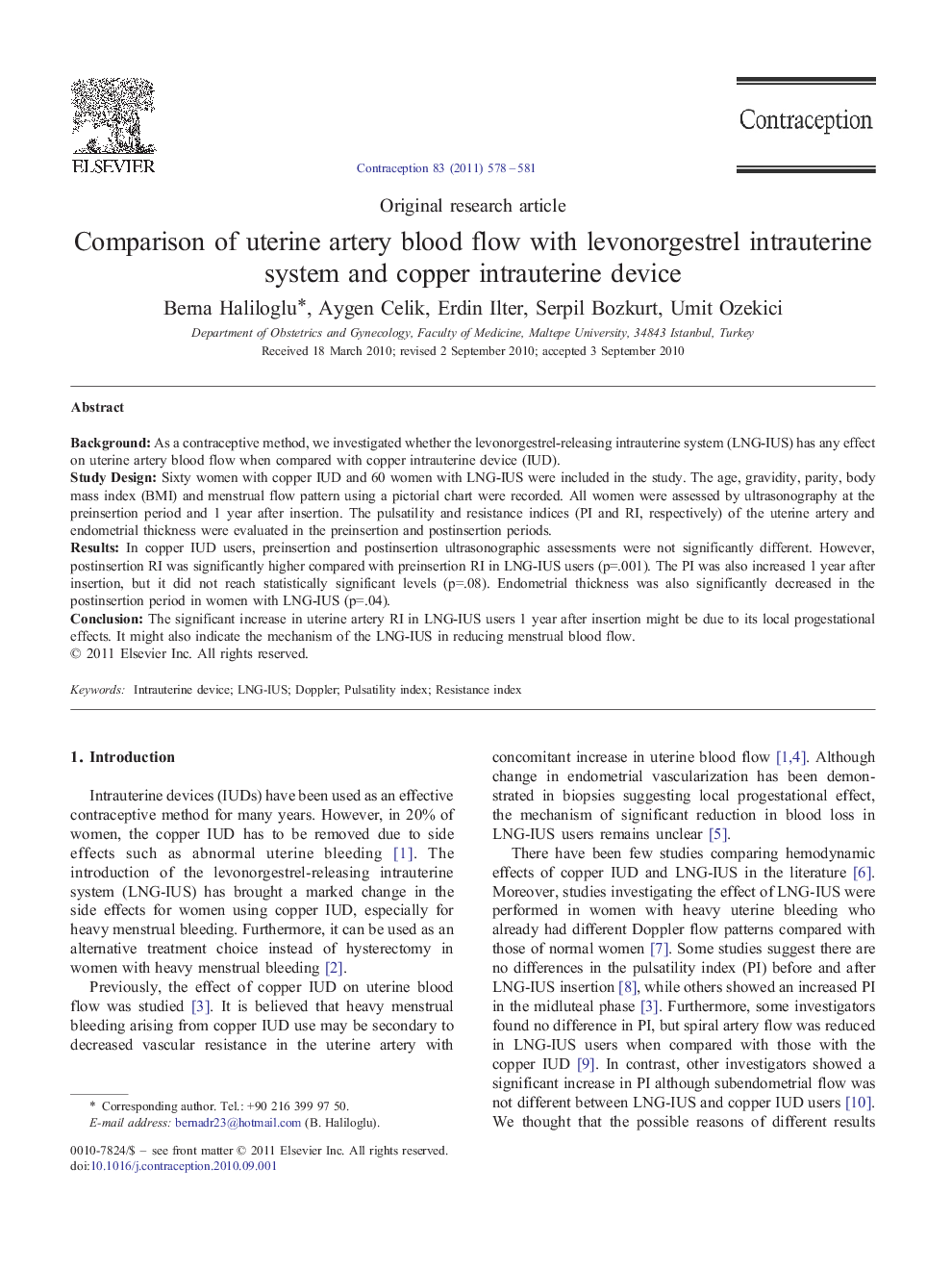| Article ID | Journal | Published Year | Pages | File Type |
|---|---|---|---|---|
| 3913962 | Contraception | 2011 | 4 Pages |
BackgroundAs a contraceptive method, we investigated whether the levonorgestrel-releasing intrauterine system (LNG-IUS) has any effect on uterine artery blood flow when compared with copper intrauterine device (IUD).Study DesignSixty women with copper IUD and 60 women with LNG-IUS were included in the study. The age, gravidity, parity, body mass index (BMI) and menstrual flow pattern using a pictorial chart were recorded. All women were assessed by ultrasonography at the preinsertion period and 1 year after insertion. The pulsatility and resistance indices (PI and RI, respectively) of the uterine artery and endometrial thickness were evaluated in the preinsertion and postinsertion periods.ResultsIn copper IUD users, preinsertion and postinsertion ultrasonographic assessments were not significantly different. However, postinsertion RI was significantly higher compared with preinsertion RI in LNG-IUS users (p=.001). The PI was also increased 1 year after insertion, but it did not reach statistically significant levels (p=.08). Endometrial thickness was also significantly decreased in the postinsertion period in women with LNG-IUS (p=.04).ConclusionThe significant increase in uterine artery RI in LNG-IUS users 1 year after insertion might be due to its local progestational effects. It might also indicate the mechanism of the LNG-IUS in reducing menstrual blood flow.
